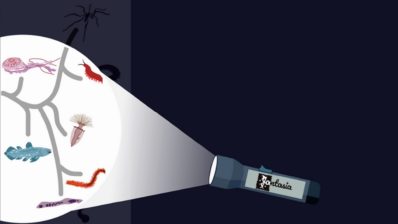This image of a salamander (Salamandra salamandra) was taken by Bernat Burriel, a PhD student in Salvador Carranza‘s laboratory at the Institute for Evolutionary Biology (IBE: CSIC-UPF). This research group, “Systematics, biogeography and evolution of reptiles and amphibians”, is coordinating an interdisciplinary project to assess the status of amphibians in Catalonia in order to improve their conservation.
This is a study promoted by the Barcelona Zoo Foundation in which 15 researchers from 8 Catalan institutions will work. In addition to IBE, other participants include the Museum of Natural Sciences of Barcelona (MCNB), the Museum of Natural Sciences of Granollers (MCNG), the Biodiversity Research Institute of the University of Barcelona (IRBio-UB), the Autonomous University of Barcelona (UAB), the Pompeu Fabra University (UPF), the Centre for Research and Environmental Education of Calafell (CREAC) and the Group for the Study and Protection of Catalan Ecosystems (GEPEC-EdC).
More than 40% of amphibian species are threatened with extinction, according to the International Union for Conservation of Nature (IUCN). Catalonia is home to 16 of the more than 6,000 amphibian species in the world. One of them, the Montseny newt, is found only in Catalonia.
The disappearance of amphibians would have a direct impact on human health, because it would affect the balance of ecosystems and water quality. “This project is an integrative approach that aims to improve our understanding of amphibian biodiversity in Catalonia, while developing innovative practical tools for their conservation and management,” says Carranza.






